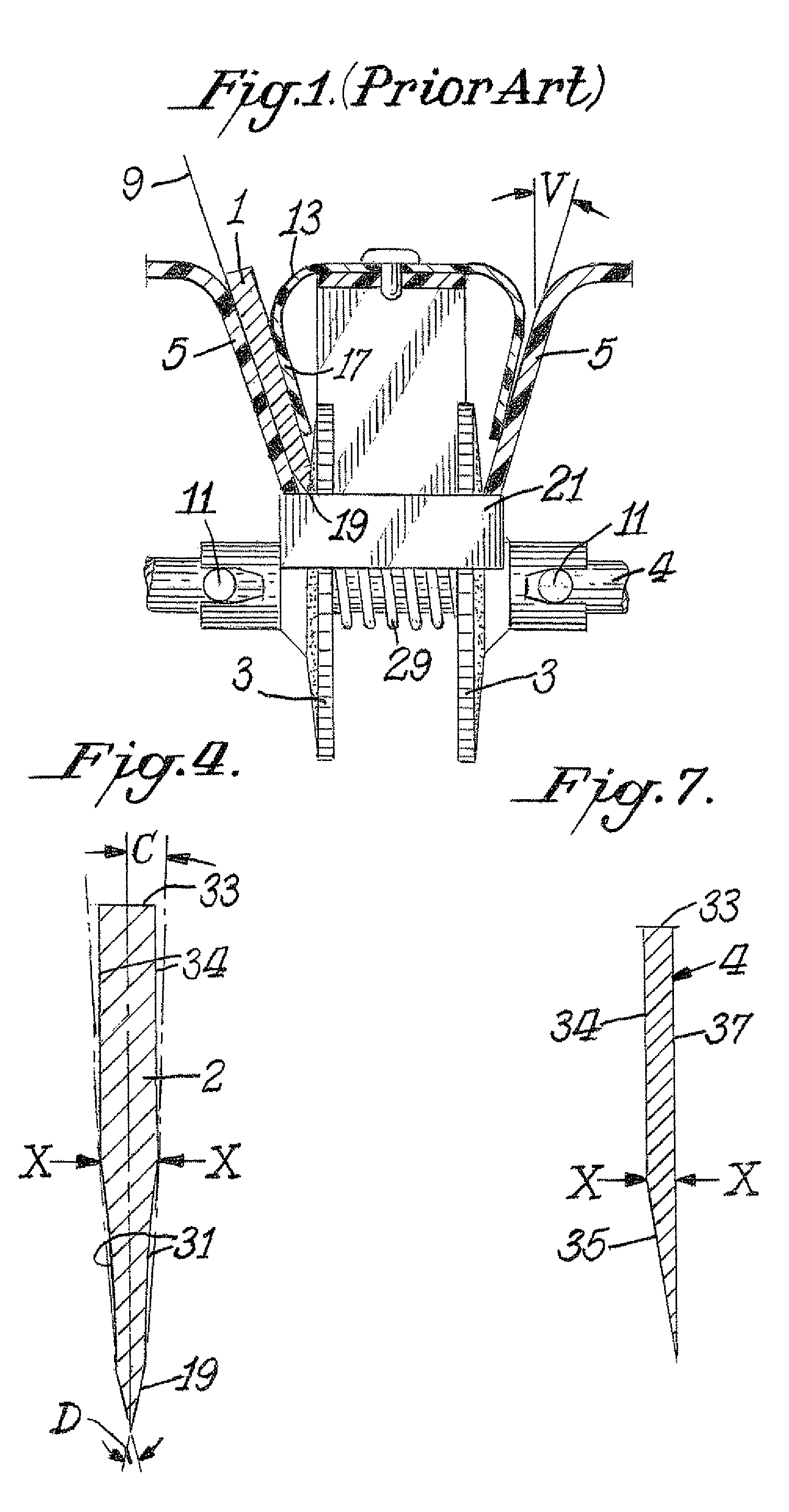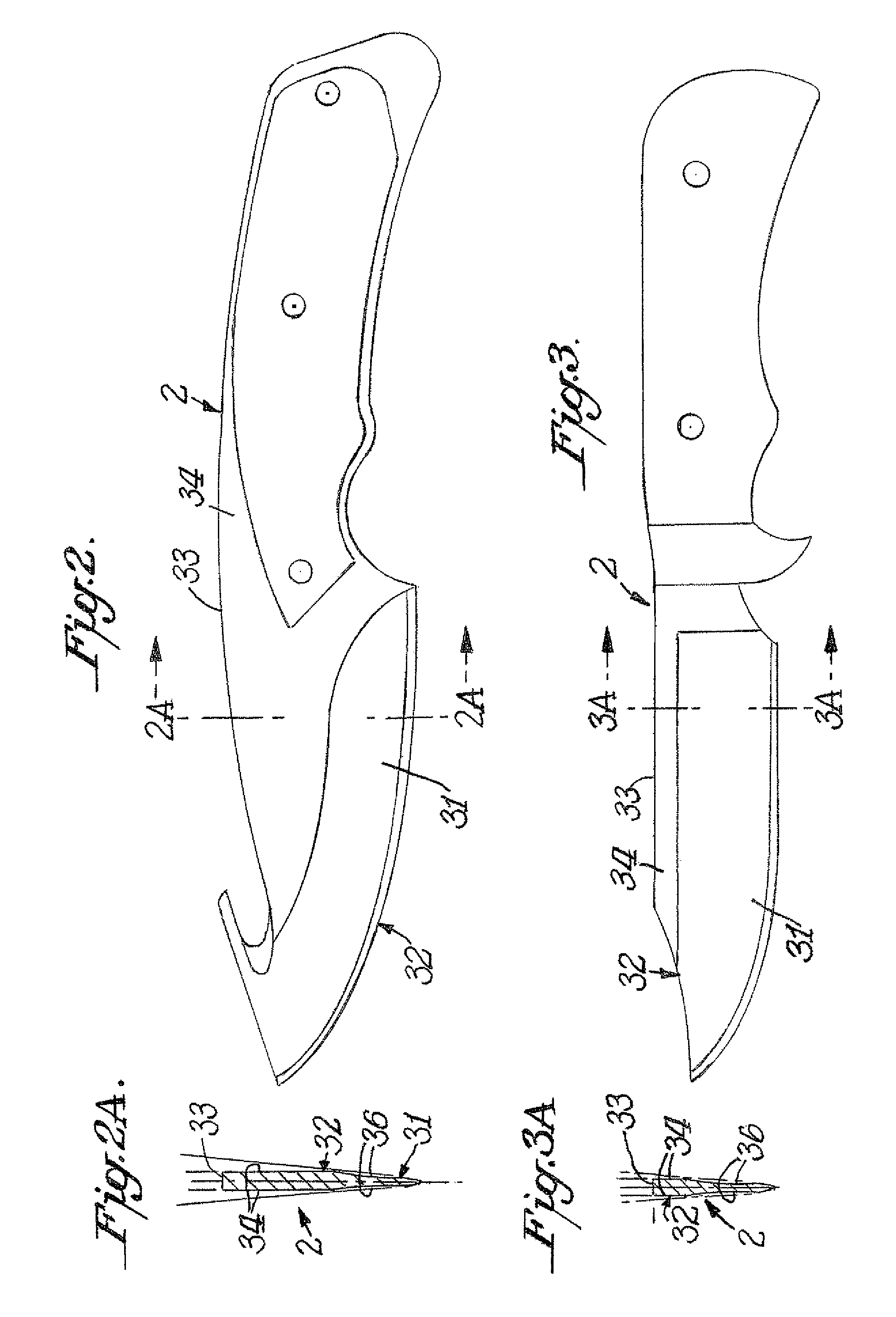Precision sharpener for hunting and Asian knives
a technology for asian knives and sharpeners, which is applied in the field of precision sharpeners for hunting and asian knives, can solve the problems of serious compromise of the precise angular control of the facets being ground at the knife edge, and the limited precision of hunting style knives and certain asian knives in knife sharpeners
- Summary
- Abstract
- Description
- Claims
- Application Information
AI Technical Summary
Benefits of technology
Problems solved by technology
Method used
Image
Examples
Embodiment Construction
[0015]FIG. 1 illustrates the conventional prior art means of controlling the position of a knife blade 1 as its edge facet is placed into contact with a rotating abrasive-covered disk 3. The abrasive disk mounted on shaft 4 is motor driven. The motor is not shown. The conventional knife blade 1 is positioned by hand against the inside surface plane of the knife guide 5 and is pressed against that surface by a conventional inverted U shaped spring 13 that has a large flat arm 17 that presses against the right flat face of a conventional knife 1. This type of knife holding spring conforms well to the flat face of a conventional knife blade and presses the knife's back face into good alignment with the contacting planar surface of the guide 5. Thus a knife whose faces are planar and parallel is securely positioned between arm 17 of the spring 13 and the contacting flat surface of guide 5.
[0016]Most kitchen knives, pen knives, slicers, and chefs' knives have flat faces and for these kni...
PUM
| Property | Measurement | Unit |
|---|---|---|
| angle | aaaaa | aaaaa |
| edge angle | aaaaa | aaaaa |
| thickness | aaaaa | aaaaa |
Abstract
Description
Claims
Application Information
 Login to View More
Login to View More - R&D
- Intellectual Property
- Life Sciences
- Materials
- Tech Scout
- Unparalleled Data Quality
- Higher Quality Content
- 60% Fewer Hallucinations
Browse by: Latest US Patents, China's latest patents, Technical Efficacy Thesaurus, Application Domain, Technology Topic, Popular Technical Reports.
© 2025 PatSnap. All rights reserved.Legal|Privacy policy|Modern Slavery Act Transparency Statement|Sitemap|About US| Contact US: help@patsnap.com



